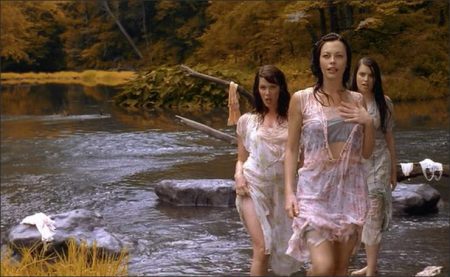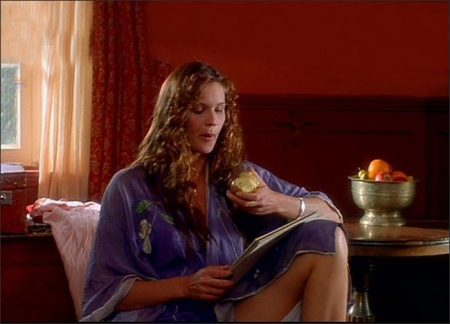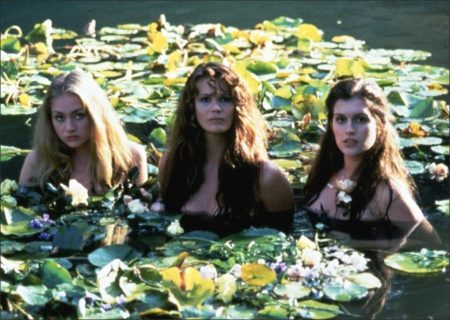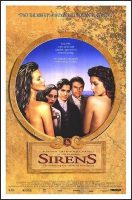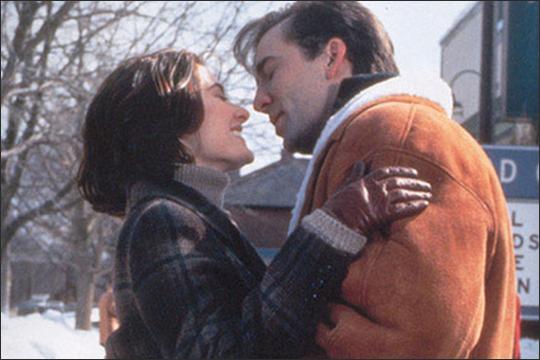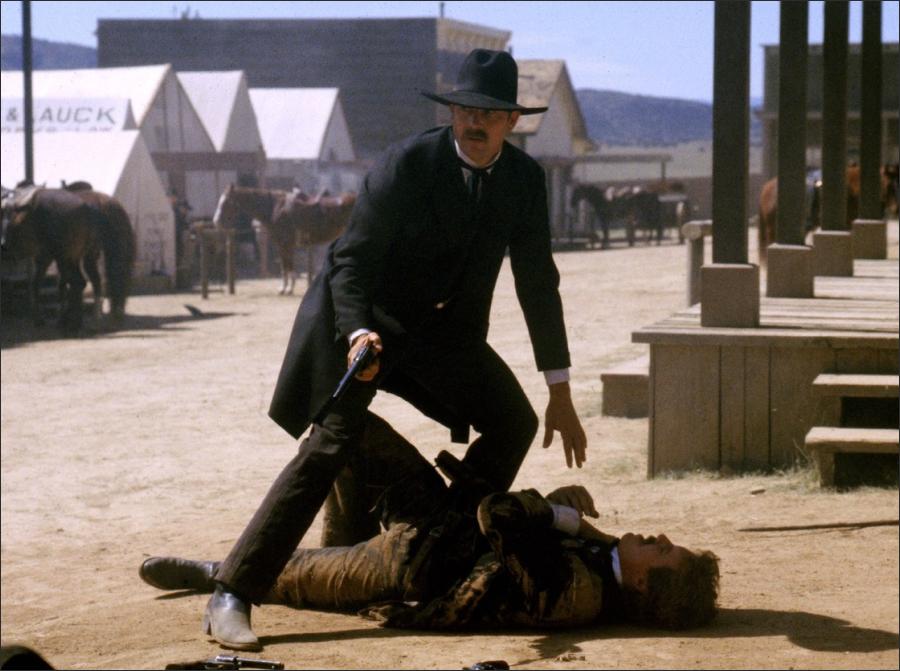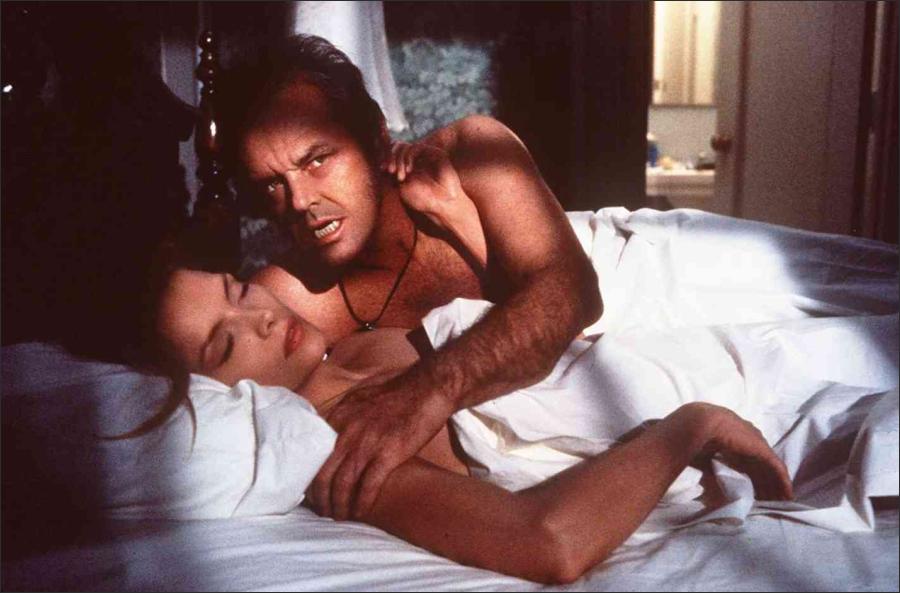Sirens movie storyline. A young reverend and his wife are on the way from England to Australia to minister to their flock. The bishop asks him to visit an eccentric artist prone to sexual depictions and requests that he voluntarily withdraw a controversial work call “Crucified Venus” from his show. The minister, who considers himself a progressive, is shocked at the amoral atmosphere surrounding the painter, his wife, and the three models living at his estate. The minister’s wife is troubled also, and has to deal with latent sexual urges while trying to remain loyal to her husband.
Sirens is a 1994 film, based on the real life artist Norman Lindsay, written and directed by John Duigan and set in Australia during the interwar period. Sirens, along with Four Weddings and a Funeral and Bitter Moon, all released in the US within weeks of one another, were the films that brought Hugh Grant to the attention of American audiences.
Film Review for Sirens
John Duigan’s “Sirens” isn’t an atrocious movie. After all, the filmmakers have found a way of showcasing Elle MacPherson’s full talents without staging a wet T-shirt competition. “Sirens” — which also stars Sam Neill, Tara Fitzgerald and Hugh Grant — is a peculiar, not entirely undesirable sort of art-house hybrid, like a marriage between “Masterpiece Theatre” and “Baywatch.”
Basically, “Sirens” is a tale of sexual awakening. The story goes like this: In ’30s Australia, a young Anglican clergyman named Anthony (Grant) and his wife, Estella (Fitzgerald) are sent by the bishop to pay a semi-official visit to the home of painter Norman Lindsay (Neill), whose most notorious recent work, “The Crucified Venus,” has outraged the church fathers. Not that the church wants to censor Lindsay, mind you, or force his withdrawal from the international exhibition where his work is scheduled to show. No, what the bishop would like Anthony to do is ask Lindsay if he wouldn’t mind, perhaps, withdrawing this one particularly offensive painting.
Lindsay won’t budge, of course. Surrounded by his harem of beautiful models — Sheela (MacPherson), Prue (Kate Fischer) and Giddy (Portia De Rossi) — this profane artist is an unpenitent sensualist. Based on the real Norman Lindsay, the Australian painter, novelist and freethinker who scandalized polite society with his progressive ideas about sex, the character here is the most untortured of artists. As Neill plays him, Lindsay is a sort of drowsy eminence; eccentric, perhaps, but a harmless bohemian prankster.
Neill’s role is small but central, and he is as suave and mellow here as he’s ever been. His main function in the film — which was shot on Lindsay’s impressive estate in Australia’s Blue Mountains — is to represent the artist as liberator, freeing those who embrace his work from the repressive inhibitions of the church.
At present, he is hard at work on a canvas called “The Sirens,” in which his family of models strips down to play the mythic seductresses from “The Odyssey.” But, although Lindsay delivers some impassioned speeches in defense of his point of view, the character is somewhat peripheral to the main action. The true center of the film is Estella, Tony’s rather priggish young wife, who shares her husband’s disdain for Lindsay’s art, but who also seems to be wavering in her prudish beliefs.
Picking up on Estella’s curiosity, Sheela and the other models try to convert her to their immodest ways. Every day they take her down to the swimming hole where they splash about in the nude and chat about their most intimate sexual fantasies. Eventually it becomes clear that Lindsay’s muses are as evangelical in their attitudes as the officials of the church. They want to free Estella as an act of sisterly kindness, to get her to join them in their cult of feminine sexuality.
If the ideas that Duigan presents here sound somewhat dated and old hat, like warmed-over D.H. Lawrence, it’s because they are. Some scenes, like the one in which Estella’s passion is released by the tender, knowing hands of a blind laborer, are almost laughable. It’s also hard to accept Grant’s tight, uninflected portrayal of Tony as repressed British twerp, not so much because such characters don’t exist but because they are all too common. Fitzgerald is more convincing in her role as the preacher’s wife, mainly because the actress has a sort of natural sadness about her.
As Sheela, MacPherson is such a paragon of physical ease and beauty that you can’t blame Estella for wanting to join her crusade, but of the models the standout is De Rossi, who portrays Giddy as an early airheaded prototype for the modern Valley girl. Eventually the sirens’ strategy works. When Tony and Estella head off on their own, they are changed people. Tony isn’t able to persuade Lindsay to withdraw the offending work, but by the end, that seems a minor matter indeed.
Sirens (1994)
Directed by: John Duigan
Starring: Hugh Grant, Tara Fitzgerald, Sam Neill, Elle Macpherson, Portia de Rossi, Pamela Rabe, Ben Mendelsohn, Julia Stone, Ellie MacCarthy, Mark Gerber
Screenplay by: John Duigan
Production Design by: Roger Ford
Cinematography by:
Film Editing by: Humphrey Dixon
Costume Design by: Tony Phillips, Terry Ryan
Set Decoration by: Kerrie Brown, Lin MacDonald
Art Direction by: Laurie Faen
Music by: Rachel Portman
Distributed by: Miramax Films
Release Date: April 28, 1994
Hits: 1986
